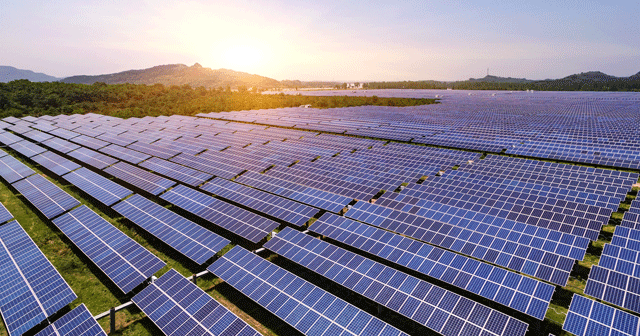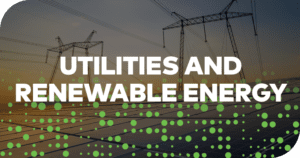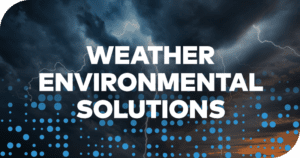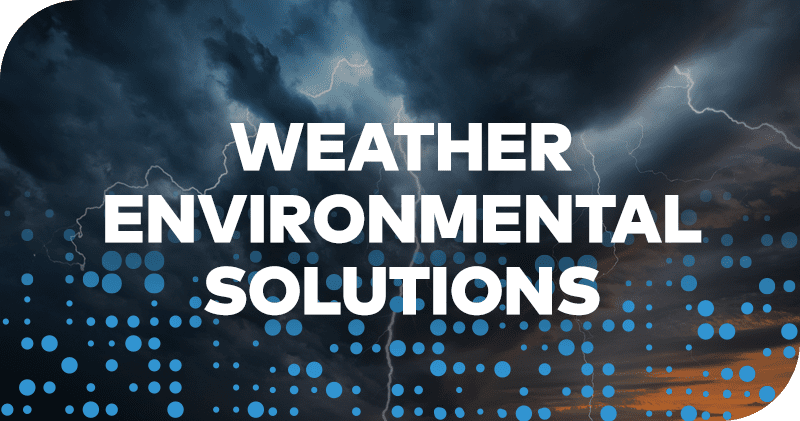Lightsource bp Leverages DTN Weather Intelligence to Reduce Risks

The demand for renewable energy and the expansion of solar fields is on a meteoric rise, as is the potential for weather risks. There are multiple reasons for the surge in solar module damage, including the exponential number of solar fields, an increase in extreme weather events, and the location of new projects.
Instead of leaving solar modules to the fate of bad weather, solar developers, like Lightsource bp, are using technology and weather intelligence to minimize risks while continuing to accelerate the generation of renewable energy.
“Solar energy has the power to mitigate climate change and its damaging effects, but solar farms must also be prepared to withstand those same extreme weather events,” said Lightsource bp Head of Innovation and Operational Excellence, Americas Kevin Christy.
This resiliency has been tested in recent years with enough force to change future risk mitigation strategies.
The storm event that changed the industry
Hurricanes, blizzards, flooding, hailstorms, and wildfires are all weather risks for solar farms, and they have been increasing significantly. According to the GCube Insurance Services statistic cited in PV Magazine, some 70% of solar losses in the last 10 years have occurred since 2017. But a significant hail event in Texas that caused $70 million in losses to solar modules changed the way investors, insurance companies, and other stakeholders evaluate hail risk.
DTN hail swath data shows the average number of large hail (>.75”) days per year in the United States between 2003 and 2022.
“Prior to 2020, the prevailing attitude around hail risk was that we had solar modules tested for hailstones up to a certain size. If they were bigger than that, we had insurance.” Christy said.
But that event in Texas, along with other recent natural catastrophic losses, changed how insurance companies assess and underwrite weather risks and loss scenarios. According to Christy, insurance deductibles and rates have gone up as much as tenfold since 2020. The lower coverage limits and stricter underwriting terms have left owners with high loss exposure at a time when the growth of solar projects is exploding.
Using weather intelligence to combat weather risks
To counter the increased threats and insurance costs, Christy and his team are leveraging technology and weather intelligence to reduce risk from unforeseen hailstorms.
“Solar energy has the power to mitigate climate change and its damaging effects, but solar farms must also be prepared to withstand those same extreme weather events,” said Christy. Watch the conversation to learn more about hail risk mitigation.
Lightsource bp solar projects in the United States are ground mounted with single-access trackers that move the panels with the sun’s trajectory. At night, the company positions the modules in hail stow, a maximum tilt, instead of zero-degree tilt, for the off chance that a hailstorm occurs at night. But most hailstorms begin during daylight hours when solar panels are angled to best capture rays.
According to DTN Risk Communicator and meteorologist Brad Nelson, the inopportune timing is due to warming temperatures at the surface that can promote the development of intense thunderstorms with strong updrafts — while the upper atmosphere is still cool enough to support hail growth.
Lightsource bp incorporates several weather tools and analyses into their risk mitigation, from National Weather Service (NWS) connective outlooks and risk maps to DTN Storm Corridor.
DTN Storm Corridor is an API solution that identifies storm paths and their proximity to solar modules to support informed, agile decisions around risk mitigation. The platform also integrates weather forecasts with DTN ArcGIS for easy tracking of storms related to solar assets.
DTN Storm Corridor data, available via API, includes the expected severity or size of hail and the probability of a hailstorm impacting a specific field.
“The DTN Storm Corridor hail swaths are beneficial and allow us to visualize impending risk, not just where the hail has fallen, but also where the hailstorms are headed,” Christy noted.
If thunderstorms are evident, Lightsource bp goes into an active monitoring situation for at-risk assets. The team will discuss options and available data and then comes to an agreement about whether and when to go into stow mode. The decision is not taken lightly. Moving a solar panel in and out of maximum tilt takes time and impacts the company’s potential to generate energy. The choice to not stow also has perils, as evidenced by the Texas hailstorm.
“Hail forecasting is a valuable tool for the solar industry,” Nelson noted. “DTN can provide a tap on the shoulder to ensure that a customer isn’t surprised when there is a potential risk to solar assets. Knowing the hail risk and the time horizon helps to ensure all the right processes are in place to pivot to hail stow when needed.”
Innovative stow automation
If hail looks imminent, Lightsource bp solar panels are tilted at an optimal angle for risk mitigation using an auto-stow algorithm developed by the team. They pair the solar track technology with real-time weather insights and proactive alerts to ensure solar panels enter full mitigation mode before a hail strike. Working with DTN weather experts and tools, the Lightsource bp algorithms provide hail warnings up to 30 minutes in advance of public NWS alerts, which enables the solar company to fully automate the mitigation process end-to-end.
“Knowing the hail risk and the time horizon helps to ensure all the right processes are in place to pivot to hail stow when needed,” said Nelson.
“We have one prevailing goal for the program that we call ‘zero false negatives’,” Christy said. “This means we will always stow before a potentially damaging hailstorm arrives at the site. And we’re willing to tolerate as many false positives as reasonable to mitigate risk to for projects, investors, and insurers.”
This innovative approach of integrating weather intelligence and sophisticated algorithms not only advances the company’s position to reliably generate solar power, but it also advances the industry’s weather resiliency — and potentially reduces industry costs related to risk.
Christy offers to share information about their weather risk mitigation plan to other solar developers.
“We don’t view this as a competitive advantage. We all benefit as an industry as risk adoption or risk mitigation methods are increasingly used,” Christy said.
To learn more about DTN Storm Corridor for the solar industry, visit here.










 Comprehensive weather insights help safeguard your operations and drive confident decisions to make everyday mining operations as safe and efficient as possible.
Comprehensive weather insights help safeguard your operations and drive confident decisions to make everyday mining operations as safe and efficient as possible. Learn how to optimize operations with credible weather and environmental intelligence. From aviation safety to environmental compliance, our comprehensive suite of solutions delivers real-time insights, advanced forecasting, and precise monitoring capabilities.
Learn how to optimize operations with credible weather and environmental intelligence. From aviation safety to environmental compliance, our comprehensive suite of solutions delivers real-time insights, advanced forecasting, and precise monitoring capabilities.